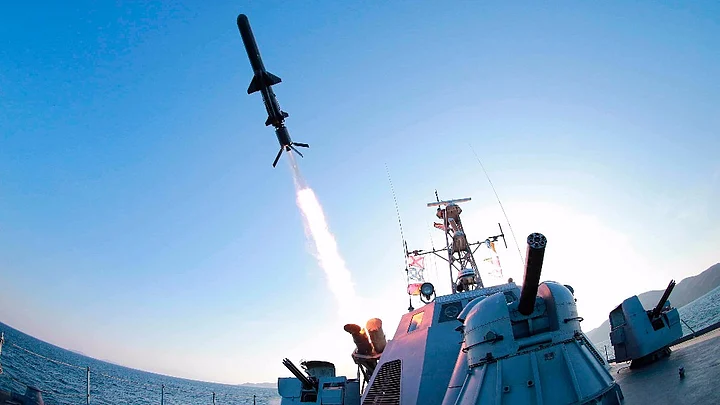A North Korean ballistic missile was seen by the crew of several airliners last week, raising concerns about the threat to civilian flights posed by Pyongyang's unannounced tests, as reported by the Washington Post. This sighting was confirmed by the officials of China’s Cathay Pacific airlines on Monday. The crew of Hong Kong bound airlines said they witnessed the North Korean ballistic missile re-entering the Earth’s atmosphere.
A South Korean transportation ministry official, who wanted to remain unnamed, said the flight paths of the Korean airlines were some 220 kilometres away from where the missile landed. He added, in the clean dark sky, you can see flashes from a missile from a long distance.
As per the South China Morning Post report, the general manager of the Cathay Pacific Mark Hoey, had said that the crew had described seeing the missile "blow up and fall apart".
North Korea has been conducting a flurry of missile tests in 2017, despite the ongoing international protests.
According to the North Korean state media, Pyongyang fired an intercontinental ballistic missile (ICBM) last week, which reached an altitude of 4,475 kilometres before splashing into the sea 950 kilometres east of its launch site.
Although Cathay Pacific crew said there was no current plan to change air routes, saying its plane was "far from the event location". However, the Singapore Airlines had changed its flight route between the US and Asia, reported the CNN Money. Air Canada and Singapore Airlines too had to change their routes because of the same, as reported by the Washington Post.
Japan’s transport ministry also said air controllers in the country received reports of four such sightings.
David C Wright, a senior scientist at the Union of Concerned Scientists, wrote in a report on Tuesday that the Cathay crew most likely had seen the missile’s first stage burn out and fall back to earth. Ignition of the second stage rocket engine and separation of the first stage may have looked like an explosion that caused the missile to fall apart.
Wright also said the “flash”, seen by Korean pilots about an hour after the missile’s launch, would be consistent with the warhead heating up during re-entry, since the missile flew for 53 to 54 minutes.
North Korea stopped giving advance notice of its missile tests in 2014.
